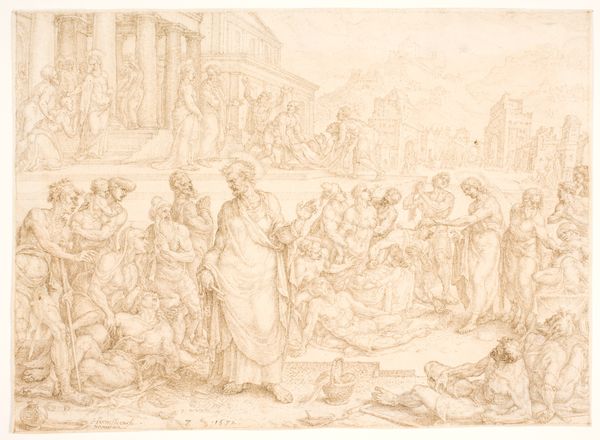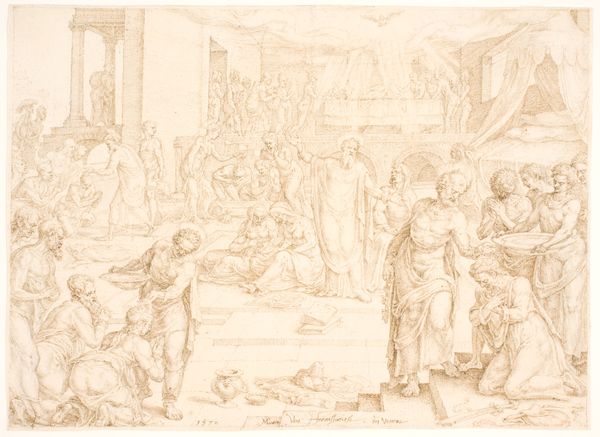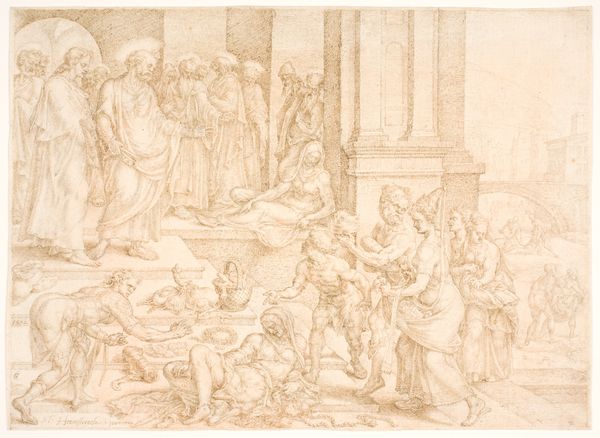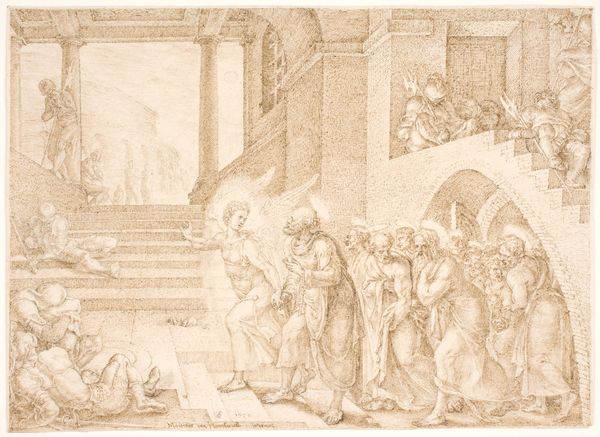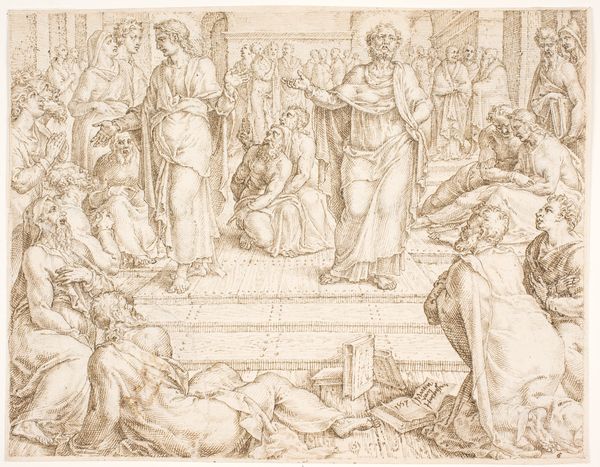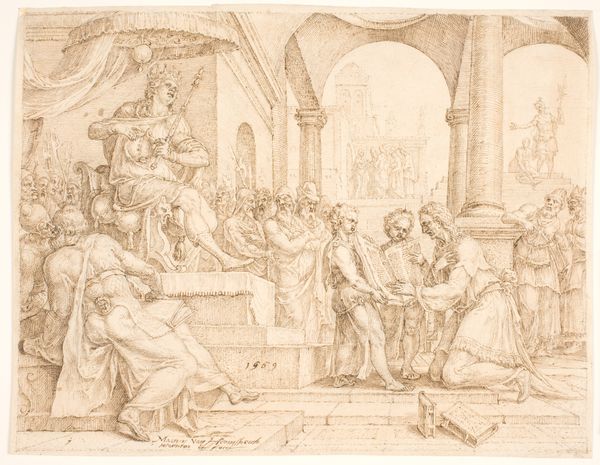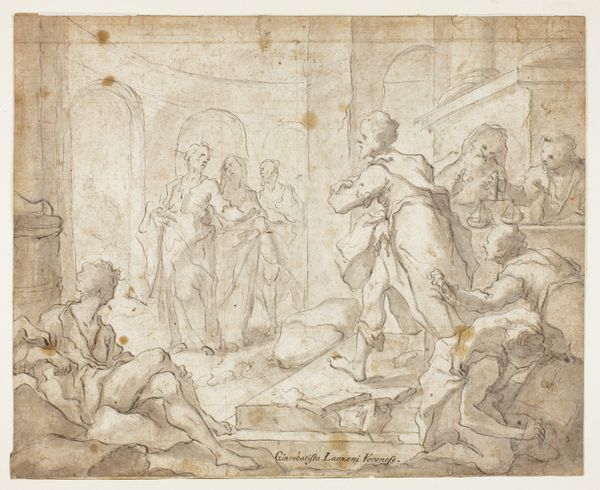
Filip, Peter og Johannes tildeler de døbte mænd og kvinder i Samaria helligånden gennem håndspålæggelse 1572
0:00
0:00
drawing, etching
#
drawing
#
etching
#
etching
#
figuration
#
11_renaissance
#
history-painting
#
northern-renaissance
Dimensions: 197 mm (height) x 280 mm (width) (bladmaal)
Curator: Let’s examine Maarten van Heemskerck's etching from 1572, titled "Filip, Peter og Johannes tildeler de døbte mænd og kvinder i Samaria helligånden gennem håndspålæggelse"– "Philip, Peter, and John Imparting the Holy Spirit to the Baptized Men and Women in Samaria through the Laying on of Hands." Editor: My initial reaction is one of observing labor and action here. It feels like a very active scene rendered delicately, with so many figures rendered via fine lines to make a layered composition. What are we really looking at in terms of materiality and who were its consumers at the time? Curator: The subject matter comes from the Acts of the Apostles. Peter and John are bestowing the Holy Spirit on new converts in Samaria. Laying on of hands was an apostolic ritual. Note how Heemskerck has depicted a dove radiating light at the very top to convey the presence of the Spirit. Editor: It's interesting how the supposed ‘divine’ spirit at the top actually gives direction for an embodied communal transaction between figures below. To your eye as an Iconographer, what does the architectural space signify here, particularly where you find a congregation of observers in the background? Curator: The architectural setting—classical columns, arches—suggests a sacred space. But it is more than just a backdrop. The repetition of figures moving back into the depicted space allows us to consider how spiritual authority and tradition are being visually framed and upheld. Think also about the history and power associated with laying hands; for example, in coronation ceremonies. Editor: I see. The artist is working from an earlier time, and seems keen on imbuing ritual as much as space to be a conveyor of this symbolic message. Does that mean his material consideration might also carry similar connotations of spiritual inheritance? Curator: Precisely. Consider how the work exists in multiples through the etching process itself, enabling wider distribution of religious narratives, functioning as instruction, reinforcing these rituals and their meanings. Editor: This gives a fresh understanding to consider how religious stories were told through printed imagery and to examine a 16th century image using today's context for popular consumption. Curator: The enduring power of symbolic images, their ability to communicate spiritual truths across generations. That's what continues to draw me to art like this. Editor: And the materiality and context through which labor creates an avenue for a wider viewership continues to intrigue me in terms of influence.
Comments
No comments
Be the first to comment and join the conversation on the ultimate creative platform.

